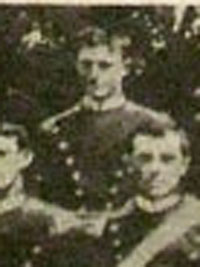Private William John Cherrie

William John Cherrie and his twin sister were born on 26 March 1894 at Drumcaw, Clough, County Down. He was the last of six children of farmer David Cherrie and his wife Susan (nee Maxwell). By the time of the 1911 Census he was living with his parents, two siblings and a niece at Claragh, Seaforde, County Down, and working on the family farm.
Cherrie enlisted in the North Irish Horse at Newcastle between 16 and 23 February 1912 (No.677). He embarked for France with A Squadron on 17 August 1914, seeing action on the retreat from Mons and advance to the Aisne.
'A' Squadron served as escort to the BEF's commander-in-chief, General French, from late 1914 to January 1916, when it became divisional cavalry to the 55th Division. In May that year the squadron came together with D and E Squadrons to form the 1st North Irish Horse Regiment, serving as corps cavalry to VII, XIX, then V Corps.
In September 1917 the 2nd North Irish Horse Regiment was disbanded and most of the men, together with some surplus to the needs of the 1st NIH Regiment, were transferred to the 9th (Service) Battalion, Royal Irish Fusiliers – renamed the 9th (North Irish Horse) Battalion.
Cherrie, like most, was transferred on 20 September. He was issued regimental number 41515 and posted to B Company. He probably saw action with the battalion at the Battle of Cambrai in November and December 1917.
Cherrie was one of the many listed as missing following the retreat from St Quentin during the German Srping offensive, from 21 to 28 March 1918. No news was heard until his family received a letter from him on 1 July, telling them that he was being held by the Germans as a prisoner of war. He was released soon after the Armistice, arriving at Dover on 1 December 1918.
After the war Cherrie returned to farming at Claragh. He died at the Downe hospital on 13 June 1959 and was buried in the Clough Presbyterian Churchyard.
The above image can be seen in its full context here.
